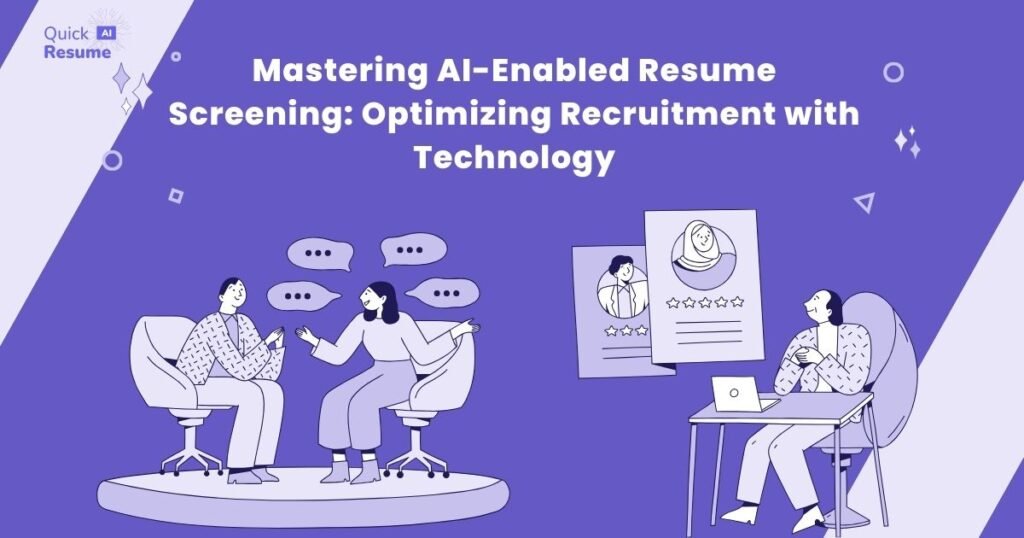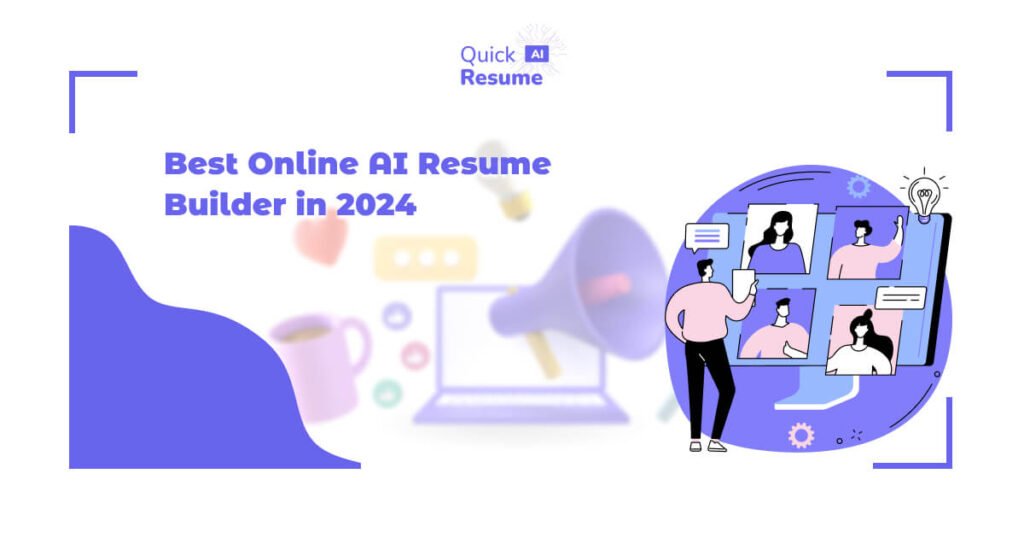
The world has gone digital, and companies are following suit. In the field of human resources, things like Artificial Intelligence (AI) have been introduced to help streamline processes. One area that has seen dramatic improvements in resume screening. AI has come up with algorithms that can process data faster than you can say your name. This article will discuss how AI-enabled resume screening is revolutionizing the recruitment world.
Understanding AI-Enabled Resume Screening
Should we get into the nitty-gritty of it all, it’s important to understand what makes an AI tick. You’re going to be really disappointed when I tell you there aren’t any nuts or bolts involved. Just a bunch of fancy words, really. The process starts by “reading” resumes and then parsing the data while looking for patterns and insights relevant to the job description at hand.
The Mechanics of AI in Resume Screening
Machine learning helps automate initial hiring steps, allowing recruiters to go over more applications in less time — but still keeping them at bay for now! The machine “reads” resumes just as a human would, only much faster than any human could ever dream of doing so. By “reading,” I mean evaluating content and identifying patterns and insights relevant to the job being applied for — although, if we’re being honest here, they don’t even know what a job is or why people need it in their lives.
The Tangible Benefits of AI-Enabled Screening
There are many advantages to using this new system — too many if you ask me, but hey, who am I? For starters, efficiency skyrockets! Things that used to take weeks can now be done within hours — which I’m sure is great news for hiring managers who have better things they’d rather be doing or places they’d rather be spending their time! Bias also gets minimized along with unconscious bias, which sometimes — well, most times — affects the outcome of a person’s application. When using AI in resume screening, there are no genders, races or other demographic factors that could influence decision making. It strictly looks at qualifications, skills and experience.
Implementing AI-Enabled Screening in Your Hiring Process
It can be scary to move away from something you’re comfortable with, but it has to be done sometimes! Here are a few steps on how to implement AI-enabled screening into your hiring process:
Choosing the Right AI System
The hardest part about this step is realizing that you have options. But don’t worry too much because most systems offer free demos and pilots, so you can give them a test run before putting all your eggs into their basket.
Defining Job Criteria for Automation
As easy as it would be to just say — “We want someone who does everything,” that’s not realistic. Unless you’re hiring Superman or Superwoman, You need to come up with specific criteria for each position within your company so that when it comes time for the system to start looking through resumes, it knows exactly what qualifications, skills and experience to look out for.
Monitoring and Adjusting the System
Much like real learning — whatever that is? Machine learning depends on fresh data in order to produce accurate results. Regularly monitor how your new system is operating and adjust its parameters as necessary. Look out for any biases or inaccuracies that may require tweaking!
Ensuring Ethical AI in Recruitment
AI has some serious responsibilities, especially when it comes to employment. We have to make sure the technology is fair and transparent. Here are some tips for making your AI hiring process ethical.
Guarding Against Unconscious Bias
AI is great at reducing bias — but only if we exercise care in training it. Make sure that the data used to train your AI system is diverse and free from any unfair assumptions.
Transparency with Candidates
Candidates have a right to know when they’re being evaluated by an algorithm, as well as how their data is being used. Make sure you communicate this information clearly so that candidates know what they’re getting into.
Civil Rights Compliance
Regulations regarding employment discrimination still apply to AI systems. Work with your legal team to ensure that your AI recruiting process adheres to these laws, potentially through regular audits.
Read More: Unlocking the Potential of AI Resume Technology: A Comprehensive Introduction
Balancing AI with the Human Touch
While AI saves time on screening, human recruiters are still crucial for success. After all, AI can’t pick up on certain qualities like cultural fit or unique potential.
Leveraging AI for Volume
The real power of AI lies in its ability to handle massive amounts of resumes. It takes care of all the grunt work so that your human staff can save their energy for more important tasks later down the line.
Utilizing Human Insights
Remember: People hire people! Even if an AI system screens out a candidate automatically, there may be something desirable about them that only a human interviewer would recognize.
Best Practices for Using AI in Resume Screening
Using an AI system for resume screening can greatly improve efficiency — but only if you do it right. Here are some best practices to keep in mind during implementation.
Invest in Quality Data
An AI machine needs solid data input in order to produce good results. Therefore, spend plenty of time cleaning up your resume database before throwing it into an algorithm’s hands. The better the data, the better the output will be.
Regularly Audit the Results
Don’t overlook the human touch when auditing a machine system. Regularly check in on the people your AI has shortlisted to make sure they fit your company’s needs.
Provide a Feedback Loop
Even candidates that get screened out by an algorithm deserve feedback. You don’t have to give them much; it’s just something general about why they didn’t make it past the first stage.
Continuously Develop AI Literacy
AI is always evolving, so you should be, too. Stay informed about all the new developments in this realm of HR technology to stay ahead of the curve and help your AI system reach its full potential.
Understanding and Navigating AI-Related Challenges
While AI can be a godsend for many employers, it also comes with its own set of challenges that you need to learn how to manage.
The ‘Black Box’ Problem
Sometimes, it’s hard to figure out why an AI system made a certain decision. Whenever possible, aim to use systems that explain themselves so you can ensure their decisions are both transparent and legal.
Data and Privacy Concerns
Recruiting can be a risky business. Whether it’s someone’s address or social security number, make sure your AI system is compliant with privacy regulations.
Overemphasis on Tech Over Skill
It doesn’t matter how fancy your AI is; if your team sucks, it’s not going to fix anything. Make sure you’re also putting an emphasis on the skills and experience of your recruiters.
Looking to the Future of AI in Recruitment
Although we have no idea what the future holds for us, we can be sure about one thing: AI in recruitment will play a big part in it. With each improvement, the accuracy of analyzing candidate data continues to improve.
AI’s Role in Onboarding
Onboarding could benefit greatly from some form of automation. Imagine having a virtual assistant set up for employees that guides them through their first few days — telling them where things are and what they need to know.
The Emergence of AI Career Coaches
In addition to padding resumes, AI might be able to provide helpful insight on interviews, too! Systems like these could tell users which parts went well and even suggest jobs that would suit them.
Continuous Learning and AI
To keep up with the rapid growth of technology, it’s important that recruiters learn how to utilize machines in their jobs as well — otherwise, they might end up obsolete.
Final Thoughts on AI-Enabled Resume Screening
This tech has completely changed the game when it comes to recruitment. It does more than just sift through paperwork, though. In addition to removing bias and speeding things up, some believe that using AI will create a fairer process overall (whatever that means). That said, we need to remember that there’s still no replacement for human touch, so don’t go into full robot mode just yet!


